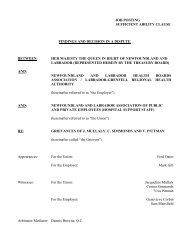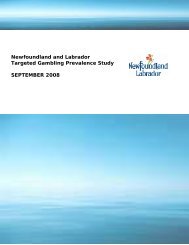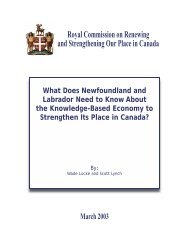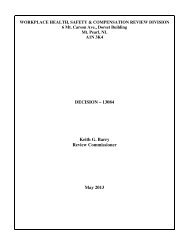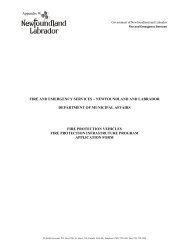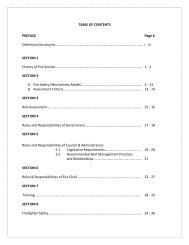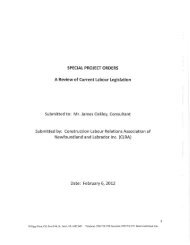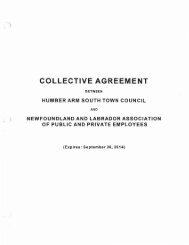Energy Plan - Government of Newfoundland and Labrador
Energy Plan - Government of Newfoundland and Labrador
Energy Plan - Government of Newfoundland and Labrador
You also want an ePaper? Increase the reach of your titles
YUMPU automatically turns print PDFs into web optimized ePapers that Google loves.
Air Emissions<br />
In 2005, <strong>Newfoundl<strong>and</strong></strong> <strong>and</strong> <strong>Labrador</strong>’s GHG emissions were approximately 15<br />
per cent lower than the average for Canada on a per capita basis. Nearly 37 per<br />
cent <strong>of</strong> these emissions came from transportation, while 12 per cent came from<br />
oil-fired generation <strong>of</strong> electricity to supply electricity to customers on the Isl<strong>and</strong><br />
<strong>and</strong> in isolated communities province-wide. The Holyrood generating plant, the<br />
largest heavy-fuel oil consumer in the province, also releases significant levels<br />
<strong>of</strong> other pollutants, such as sulphur dioxide. Holyrood is ranked as the 42 nd<br />
heaviest polluter in Canada in terms <strong>of</strong> kilograms <strong>of</strong> emissions released. In<br />
addition, <strong>of</strong>fshore petroleum projects release emissions from flaring (burning <strong>of</strong>f)<br />
natural gas during times when gas cannot be re-injected back into the reservoir<br />
or to generate power for their own use. The petroleum industries account for<br />
some 22 per cent <strong>of</strong> all GHGs released in the province.<br />
Figure 5.1<br />
GHG Pr<strong>of</strong>ile for NL 2005<br />
51



